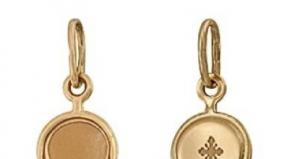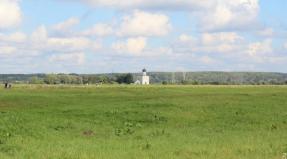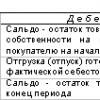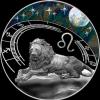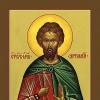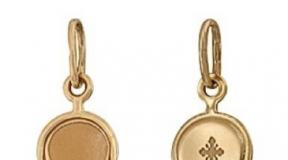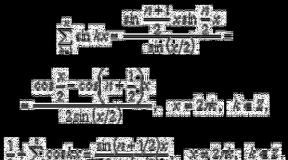When is Artyom's name day? Prayer to Artemia of Thessalonica Icons of Artemia of Thessalonica what help
In the ancient Slavic calendar, “Selevkiysky” was written as “Seleoukinsky”, from which “Selounsky” came. However, in some Greek monuments the saint is called Thessalonica. Saint Artemon (or Artemy) was designated in monthly books either as Seleucia or as Thessalonica. In the second half of the 17th century, these two names were mistakenly attributed to different persons. Saint Artemon (Artemios) was born and lived in Seleucia of Pisidia (Asia Minor). Pisidia is a province in the south of Asia Minor, originally part of Pamphylia; it was a harsh, mountainous region, but in some places fertile. The inhabitants of Pisidia were pirates and engaged in robbery. Of the cities of Pisidia, Antioch is especially remarkable in church history, where St. preached the Gospel. Apostle Paul (Acts 13, 14‒50). Here, in Seleucia, the future saint received his education. He led his pious life during the time of the holy apostles, who enlightened the world with the teachings of Christ. At the time when the holy Apostle Paul came to this city, Artemon, of all the citizens, turned out to shine with good deeds, like a lamp that could not remain hidden. He was pious and virtuous, therefore the holy Apostle Paul, having come to Seleucia, installed Saint Artemon, as confirmed in the faith of Christ and filled with Divine wisdom and as the most worthy, appointed the people as a shepherd and teacher, ordaining the first bishop of Seleucia of Pisidia. Saint Artemon wisely, well and godly cared for the flock entrusted to him and gained fame as the intercessor of the poor and persecuted, he was a haven of salvation for everyone, for widows, orphans and the poor he was an outstanding trustee, a miraculous healer of both soul and body. Having spent his entire life piously and pleasing to God, he died at a very old age. Brief Greek lives of Artemon are contained in the Minology of Basil II, in the Synaxarion of the Church of Constantinople of the 10th century, as well as in the Imperial Minology. The earliest evidence of the veneration of St. Artemon in Rus' - mention of his memory in the month of Mstislav's Gospel of the late 11th - early 12th centuries. The observance of Saint Artemon in Russian service Menaions is unknown, but it is found in the Bulgarian festive Menaion of the second half of the 14th century. The Russian Menaion of the 12th century includes a canon entitled “The Hieromartyr Arthemon, Bishop of Seleucia,” but referring to the Hieromartyr Artemon of Laodicea. In the first edition of the non-stichic Prologue, the translation of which was carried out in Rus' in the first half of the 12th century, the short life of the saint is placed under March 22; in the second edition, compiled at the end of the 12th century, under March 24. Hymnography. According to one of the Greek manuscripts of the Byzantine period there is an anonymous canon to Saint Artemon in the 4th tone without an acrostic; beginning ‒ “Τὸν ἐν ἀσκήσει, ὡς ἐν θαλάσσῃ” (Greek: “In exploits, as in the sea”). In the modern liturgical practice of the Orthodox Churches, the following of St. Artemon is not sung. In the printed Menaion, now used in the Greek Churches, according to the 6th song of the canon of Matins, there is a verse synaxarion of St. Artemon [Μηναῖον. Μάρτιος]. Iconography. Depicted in holy vestments (felonion, omophorion), with a codex in his hands: on a fresco in the Assumption Cathedral in Vladimir, c. 1189 ; on the Vologda menaion icon for March, end. XVI century (VGIAHMZ); on an 18th century icon (Icon Museum of Recklinghausen). In the iconographic original of S. T. Bolshakov (XVIII century) under March 24 about St. Artemona is told: “Grey-haired, bald, Athanasius’s brada, at the end forked, vestments, crosses, cinnabar, amphorae [omophorion] and the Gospel” (p. 83).
Any of the people can have their own day of an Angel by name, there is also a day of the Angel Artem. Angel Day is the day of the patron saint for any person with the same name.
We must remember that this day has nothing to do with the guardian angel. During baptism, a person also receives a holy patron angel from the Lord God. In a word, Angel Day is the birthday of the soul. This day is celebrated by visiting church and reading prayers.
When is Artem's name day?
Artem’s name day in the Orthodox calendar falls on seven days a year and at different times of the year in autumn, winter, spring and summer:
- Bishop Artem of Lystra – 17.01. and 12.11.;
- Artemy Palestinsky – 26.02.;
- Artema the Saint from Seleucia – 04/06;
- Artem from the city of Kizik – 12.05.;
- Artemy from Verkola – 07/06 and 11/02;

Angel Day, name day, is celebrated, as a rule, once a year on or after a birthday (but not before a birthday!). So, for example, if a boy was born on January 15, then his name day will be on January 17, and if he was born on June 11, then his name day will be on July 6.
What does the name Artemy mean in Orthodoxy?
The name Artemy takes its roots from ancient times. According to one version, Artemy comes from the name of the famous goddess of fertility and hunting from mythology - Artemis. According to another version, from the ancient Greek word “Artemes”, which translated into Russian means healthy, unharmed, not subject to disease.
In Christian history there were saints called Artemias. All of them were distinguished by their true faith in God. The Church remembers and honors them.
Artemy Verkolsky Memorial Day
The youth Artemy is one of the most revered in Rus'. He lived in the sixteenth century in the village of Verkola near Arkhangelsk. From an early age the boy was humble, meek, and led a pious life. At the age of 12, Artemy died when he was struck by lightning during a thunderstorm.

Fellow villagers, deciding that God had punished the boy, did not perform a funeral service or bury him. The deceased was left in the forest, covering his body with brushwood. About thirty years later, a local deacon accidentally discovered the incorruptible relics of Artemy, from which a radiance emanated.
The relics were transferred to a local church, where miraculous healings of people began to occur from them. Soon people began to come from everywhere for healing. It was decided to paint icons of the holy youth.
People's rumors also reached Tsar Alexei Mikhailovich. He gave the order to place the relics in a shrine and found a monastery. The days of memory of Artemy Verkolsky are considered July 6 and November 2.
Artemy Palestinian
Artemy of Antioch (Palestinian) Christian was a remarkable military man, commander during the period when Constantine the Great was on the throne, and then during the reign of his successor Constantius, his own son. Artemy's achievements in the military field were impeccable. For his outstanding successes, Constantine appointed him governor of Egypt.

But the period of the reign of Julian, the apostate emperor, began. Julian waged a merciless war against Christianity and wanted to bring back paganism. He violently persecuted Christians and killed hundreds of them.
One day, when Artemy arrived in Antich, he learned that Julian had tortured two bishops, forcing them to renounce their faith in Christ. Artemy openly expressed his protest against the pagan ruler; he was not afraid of Julian and publicly convicted him of impiety. The emperor became very angry and ordered Artemy to be tortured and then imprisoned.
In prison, when Artemy was praying, Christ “visited” him, surrounded by angels, and said: “Be courageous, and you will be with me in the eternal kingdom!”
The next morning, Julian demanded that Artemy renounce his faith and recognize paganism. But Artemy refused, the emperor ordered the torture to continue. The great martyr endured all the tortures courageously, and prophesied a quick death for Julian. Artemy's head was cut off.
Immediately after the execution, the saint was taken and buried in the Church of John the Baptist in Constantinople (later the temple was named in honor of Saint Artemius).
Saint Artemy of Thessalonica
Blessed Artemy (Artemon) of Thessalonica was born in the city of Seleucia in Pisidia of Asia Minor. He lived at the same time as the holy Apostles and led the life of a virtuous and honest person.

Of all the townspeople, Artemy was the most deeply religious Christian. For this reason, the Holy Apostle Paul, when he entered the city of Seleucia, appointed Artemius as the first bishop in the city.
The saint performed his duties excellently and to please the Lord. All the townspeople loved him and were very grateful. He ruled wisely, stood up for the persecuted and the poor, saved the suffering, took into the care of orphans and widows, and the poor. Blessed Artemy was a real miracle healer for all people of that time. He treated and healed not only bodies, but also souls. He spent his long life pleasing God and piously, and was an example for his people.
On April 6, the Orthodox Church commemorates St. Artemy (Artemon) of Thessaloniki, otherwise Seleucia.
The Day of St. Artemy of Thessalonica has practically no biographical information. Almost nothing has been preserved about the life of this saint. A small amount can be gleaned from the Minology of Basil the Second (Synaxarion of the Church of Constantinople) in the biographies of saints created before the Chetya-Menaion of Dmitry of Rostov.
The name Artemy is Greek and means healthy, unharmed. The Monk Artemy (Artemon) had the divine gift of healing. There are many known facts about the deliverance of those suffering from serious illnesses. The bright image of the monk for miraculous help on April 6, the day of St. Artemy of Thessaloniki, is addressed with prayers for healing from diseases of the gastrointestinal tract, before serious surgical operations. Orphans and widows seek His divine protection.
Due to the fact that no personal prayer has been preserved in the Orthodox service code of prayers to St. Artemon of Thessalonica, as one of the first Christians, believers pray to the holy face with a common prayer according to the rite of the venerables.
On April 6, name days are also celebrated by Vladimir, Zechariah, Martin, Parfeniy, Peter, Sever, Sevier, Sennufiy, Stepan, Jacob.
April 6 is the day of St. Artemy of Thessalonica among the people. It was assumed that it was time to change from sleighs to carts, otherwise the runners of the former would deteriorate as they slid along the ground.
If it was warm enough that day and the sun was shining, then frosts were expected to return.
At the same time, given the absence of snow on the ground that day, one could hope that it would not fall again.
If it snowed again, a good grain harvest was expected.
Sharp warming leading to frosts that will pass quickly.
The warm night promised an early and quick spring.
Folk traditions on April 6 (St. Artemy of Thessaloniki Day)
Most of the rules of this day are related to the upcoming Annunciation. People prepared for the good news, waited for it, and visited churches. In the church they not only prayed, but also illuminated the seed, hoping for a future harvest. It was believed that attending the all-night service on this day was mandatory for unmarried girls. In this way, you can earn the favor of heavenly patrons and count on finding a spouse soon. Also on this day they tried to clean the house in order to meet the good news in cleanliness.
Good deeds were welcomed. Folk traditions on April 6 involved the distribution of alms, including the transfer of gifts to prisoners in prisons. In this way, people hoped to pray for their deeds and, by repenting during the service, receive forgiveness.
Complete collection and description: prayer to Artemia of Thessalonica for the spiritual life of a believer.
Born and lived in Seleucia Pisidia (Asia Minor). He was pious and virtuous, therefore the holy Apostle Paul, having come to Seleucia, installed Saint Artemon as the first bishop of this city, as the most worthy. Saint Artemon wisely cared for the flock entrusted to him and gained fame as an intercessor of the poor and persecuted.
Died at a ripe old age.
Brief Greek lives of Artemon are contained in the Minology of Basil II, in the Synaxarion of the Church of Constantinople in the 10th century. , and also in the Imperial Minology.
The earliest evidence of the veneration of St. Artemon in Rus' - a mention of his memory in the month of Mstislav's Gospel at the end. XI – beginning XII century . Following Saint Artemon in Russian. The official Menaions are unknown, but it is part of the Bolg. festive Menaion 2nd half. XIV century In Russian Menaion of the 12th century. included a canon entitled “The Hieromartyr Arphemon, Bishop of Seleucia,” but referring to the smch. Artemon of Laodicea.
In the 1st edition of the unstitched Prologue, the translation of which was carried out in Rus' in the 1st half. XII century, a short life of the saint is placed under March 22; in the 2nd edition, compiled in con. XII century, - on March 24.
Hymnography
According to one of the Greek Byzantine manuscripts. period, the anonymous canon of St. Artemon. 4th tone without acrostic; beginning - “Τὸν ἐν ἀσκήσει, ὡς ἐν θαλάσσῃ” (Greek - In exploits, as in the sea). In modern liturgical practice of the Orthodox Churches following St. Artemon is not sung. In the printed Menaions, now used in Greek. In the churches, according to the 6th hymn of the Matins canon, a verse synaxarion of St. Artemon.
Iconography
Depicted in holy vestments (felonion, omophorion), with a codex in his hands: on a fresco in the Assumption Cathedral in Vladimir, c. 1189 ; on the Vologda menaion icon for March, end. XVI century (VGIAHMZ); on an 18th century icon (Icon Museum of Recklinghausen). In the iconographic original of S. T. Bolshakov (XVIII century) under March 24 about St. Artemona said: “Grey haired, bald, Athanasius’s brada, split in two at the end, vestments, cinnabar crosses, amphorae [omophorion] and the Gospel”(p. 83).
Literature
- BHG, N 2047;
- ActaSS. Mart. T. 3. P. 472-473;
- SynCP. Col. 557-558;
- JSV. March. pp. 452-453.
- Sergius (Spassky). Monthsword. T. 3. P. 114;
- Bardy G. Artémon (3) // DHGE. T. 4. Col. 799;
- ΘΗΕ. Τ. 3. Σ. 266;
- Σωφρόνιος (Εὐστρατιάδης). ῾Αγιολόγιον. Σ. 59.
Used materials
In the ancient Slavic calendar, “Selevkiysky” was written as “Seleoukinsky”, from which “Selounsky” came. However, in some Greek monuments the saint is called Thessalonica. Saint Artemon (or Artemy) was designated in monthly books either as Seleucia or as Thessalonica. In the 2nd half of the 17th century, these two names were mistakenly attributed to different persons. This error still persists in the official calendars of the ROCOR (see, for example, the Calendar on the official website of the Cathedral of the Holy New Martyrs and Confessors of Russia and St. Nicholas in Munich (Russian Orthodox Church Outside of Russia), http://sobor.de/ index.php?option=com_content&view=article&id.=ru .
PG. 117. Col. 363-364
Ath. Cutl. 23, XII century Fol. 215-217
Aprakos of Mstislav the Great. P. 261
RNB. Soph. 199. L. 3-5
AHG. T.III. P. 241
Μηναῖον. Μάρτιος. Σ. 175
V.N. Lazarev was mistakenly called a military commander. Artemius of Antioch
April 6, Bishop of Thessaloniki (Artemy - deri poloz): the day of St. Artemy of Thessalonica, folk traditions and signs
On April 6, the Orthodox Church commemorates St. Artemy (Artemon) of Thessaloniki, otherwise Seleucia.
Life of a Saint
The Day of St. Artemy of Thessalonica has practically no biographical information. Almost nothing has been preserved about the life of this saint. A small amount can be gleaned from the Minology of Basil the Second (Synaxarion of the Church of Constantinople) in the biographies of saints created before the Chetya-Menaion of Dmitry of Rostov.
Good deeds
The name Artemy is Greek and means healthy, unharmed. The Monk Artemy (Artemon) had the divine gift of healing. There are many known facts about the deliverance of those suffering from serious illnesses. The bright image of the monk for miraculous help on April 6, the day of St. Artemy of Thessaloniki, is addressed with prayers for healing from diseases of the gastrointestinal tract, before serious surgical operations. Orphans and widows seek His divine protection.
Due to the fact that no personal prayer has been preserved in the Orthodox service code of prayers to St. Artemon of Thessalonica, as one of the first Christians, believers pray to the holy face with a common prayer according to the rite of the venerables.
On April 6, name days are also celebrated by Vladimir, Zechariah, Martin, Parfeniy, Peter, Sever, Sevier, Sennufiy, Stepan, Jacob.
Folk signs on April 6
April 6 is the day of St. Artemy of Thessalonica among the people. It was assumed that it was time to change from sleighs to carts, otherwise the runners of the former would deteriorate as they slid along the ground.
If it was warm enough that day and the sun was shining, then frosts were expected to return.
At the same time, given the absence of snow on the ground that day, one could hope that it would not fall again.
If it snowed again, a good grain harvest was expected.
Sharp warming leading to frosts that will pass quickly.
The warm night promised an early and quick spring.
Folk traditions on April 6 (St. Artemy of Thessaloniki Day)
Most of the rules of this day are related to the upcoming Annunciation. People prepared for the good news, waited for it, and visited churches. In the church they not only prayed, but also illuminated the seed, hoping for a future harvest. It was believed that attending the all-night service on this day was mandatory for unmarried girls. In this way, you can earn the favor of heavenly patrons and count on finding a spouse soon. Also on this day they tried to clean the house in order to meet the good news in cleanliness.
Good deeds were welcomed. Folk traditions on April 6 involved the distribution of alms, including the transfer of gifts to prisoners in prisons. In this way, people hoped to pray for their deeds and, by repenting during the service, receive forgiveness.
horoscope for January 2018Catalog of icons on the website PravIcon.com
Orthodox icons of the Mother of God, Christ, angels and saints
- home page
- Icons of the Virgin Mary
- Icons of Christ
- Angel Icons
- Icons of Saints
site menu
User
Artemy (Artemon) Seleucia, Thessalonica, St.
I-n.IVc. , M. Asia, Saint
- April 6(March 24, old style)
The section was founded by member [ tol] 2009-12-14.
Saint Artemy (Artemon) of Thessalonica, Seleucia (March 24, Old Style) Originally from the Pisidian city of Seleucia, he was a disciple of St. apostle Seeing the pious and virtuous life of St. Artemon, the Apostle Paul ordained him to the rank of first bishop of Seleucia of Pisidia. The saint was a haven of salvation for the suffering, a caregiver for widows and orphans, and a miraculous healer of soul and body for everyone. The saint died at a very old age.
Images of the icon Artemius (Artemon) of Seleucia, Thessalonica, St.
Description:[Rus. XVII.] Menaion – March (fragment). Icon. Rus. Beginning of the 17th century Church-Archaeological Cabinet of the Moscow Theological Academy.
File 4293.jpg: | |
Size: 344×1200, 0.41 MPix, 75 Kb.
Date of: 2009-12-14, anonymous.
Description:[Vladimir. OK. 1189.] St. Artemy. Fresco of the Assumption Cathedral in Vladimir. Around 1189.
File 4294.jpg: | |
Size: 719×1200, 0.86 MPix, 191 Kb.
Date of: 2009-12-14, anonymous.
Description:[Rus. XVII.] Stroganov's iconographic facial original. March 24 (fragment). Rus. End of the 16th – beginning of the 17th century. (published in Moscow in 1869). In 1868 it belonged to Count Sergei Grigorievich Stroganov.
File 4295.jpg: | |
Size: 343×1200, 0.41 MPix, 74 Kb.
Date of: 2009-12-14, anonymous.
Description: Saint Artemy of Thessalonica. Modern icon, Chikalyuk M.V.
File 12738.jpg: | |
Size: 433×650, 0.28 MPix, 46 Kb.
Date of: 2011-06-11, anonymous.
Pages: . Total images: 4. Sorting: in normal order.
[Script execution: 0.118 seconds]
Prayer to Artemy Solunsky
An Orthodox icon is a window into the spiritual world.
7 926 655 20 52
- Home >
- Artemy (Artemon) Thessalonica (Seleucian) Saint. Icon on canvas.
Icon of St. Artemy (Artemon) of Thessalonica (Seleukia) - personal icon of men named Artemy, Artem. Remembrance Day was established by the Orthodox Church on April 6.
Saint Artemius (Artemon) of Thessaloniki, otherwise Seleucia, became the first bishop of the city of Seleucia for his preaching activities, and Chief Apostle Paul ordained him to this ministry, because his preaching was salvation and protection for suffering souls. In addition, a prayerful appeal to him will protect the widow and orphan who once lost close and dear people.
Prayer before the icon of Artemy (Artemon) of Thessalonica helps to find salvation for the soul in sorrows and sorrows, which more often come to those who, hesitating and doubting their faith, have parted ways with God or are at the beginning of the path of spiritual quest, in heartfelt labors, for “The Kingdom of Heaven given by force." He also helps widows and orphans find comfort, having been their guardian for a long time.
Customer Reviews
to the store near Novokosino metro station!
We are waiting for you every day
For purchases over RUB 3,000.
By courier: in Moscow (within the Moscow Ring Road) in weekdays delivery free for 1 – 3 days from 10 to 18 hours; h and the limits of the Moscow Ring Road are up to 25 km within 1 – 3 working days from 10 a.m. to 6 p.m. Delivery cost – 350 rubles.
Russian Post: By Russia Free delivery - delivered in shockproof packaging. It is possible to send parcels with cash on delivery, outside the Russian Federation Delivery is carried out by mail only after 100% prepayment.
Express delivery by SDEK to all regions is carried out within 3-8 days after 100% prepayment of the order.
Today, April 6, we honor the memory of saints Artemy of Thessalonica, Venerable Zechariah, the icon of the Mother of God called “Fat Mountain”
The last, sixth, week of Lent has begun. On April 6, the Orthodox Church remembers the icon of the Mother of God, called “Fat Mountain” (XVII).
Venerable Zacharias the monk, Zacharias, faster of Pechersk (XIII-XIV), James the confessor, bishop (VIII-IX).
Saint Artemius (Artemon) Bishop of Thessalonica (Seleucia) (I-II).
Martyr Stephen and Peter of Kazan (1552).
Holy Martyr Vladimir the Presbyter (1920).
About 250 - 300 years ago, an icon Mother of God, called "Fat Mountain"(XVII) was in one of the monasteries of Tver and was presented by the abbot to Cosma Volchaninov in gratitude for the well-performed work in the monastery church. This icon was passed down from generation to generation as a shrine, but one irreverent grandson of Cosmas took the dilapidated icon into the attic. His daughter-in-law suffered constant insults from her husband and his relatives. In despair, the woman decided to commit suicide in an empty bathhouse. A monk appeared on her way and said: “Where are you going, unfortunate one?” Go back; go, pray to the Mother of God of the Fat Mountain - and you will live well and peacefully.”
The excited young woman, returning home, told everything, without hiding her intention to commit suicide. They began to look for the monk, but did not find him, no one except her saw him. This happened on the eve of the Feast of the Annunciation of the Blessed Virgin Mary.
The icon was immediately found in the attic, cleaned of dirt and placed in a place of honor in the house. In the evening, the parish priest was invited, who celebrated the All-Night Vigil before the icon; this became an annual tradition. For more than a hundred and fifty years, the icon was in the Volchaninov family. Ekaterina, the daughter of Vasily, the last of the Volchaninov family, having married Georgy Ivanovich Konyaev, took the icon of the Mother of God as her most precious inheritance. And in Konyaev’s house, prayer services and All-Night Vigils were held in front of this icon on March 24 and November 7 (probably this was the day the icon was transferred from the monastery to the house of Kosma Volchaninov).
In 1863, at the cemetery church of the Smolensk Icon of the Mother of God, it was decided to build a chapel in honor of St. Tikhon and St. Macarius of Kalyazin. The then owner of the icon, Georgy Konyaev (+ 1868, at the age of 97 years) wished to transfer the healing image of the Mother of God to the temple. He turned to the clergy with a request to build another chapel for the miraculous image of the Mother of God “Fat Mountain”. At the same time, he said: “I think that the temple of the Smolensk Icon of the Mother of God is the best for her, because the place on which the church was built was in the old days called a mountain, as the highest place in the city. In the past, residents brought their property to this mountain during floods and saved themselves from death here. May the Queen of Heaven – the Fat Mountain – rest with her grace on this mountain and cover all those buried here with her mercy.”
On July 15, 1866, the icon was moved to the built chapel, which the next day was consecrated by Bishop Anthony of Staritsa.
On the icon, the Most Holy Theotokos is depicted standing on a semicircular elevation - a mountain; on Her left hand is the Child of God with a blessing right hand. On the head of the Mother of God is a crown, and in her hand is a small mountain, on which the top of the church with domes and crosses is visible.
For his special care for the poor and wanderers, he was nicknamed “the open one.” In the printed Menea (the liturgical book of the Orthodox Church, containing the services of the annual circle), his memory is designated as “our venerable father Zechariah” - hence the erroneous division in the monthly book of Zechariah and the venerable Zechariah the monk.
Saint Artemy (Artemon) of Thessalonica, Seleucia originally from the Pisidian city of Seleucia, was a disciple of St. apostle Seeing the pious and virtuous life of St. Artemon, the Apostle Paul ordained him to the rank of first bishop of Seleucia of Pisidia. The saint was a haven of salvation for the suffering, a caregiver for widows and orphans, and a miraculous healer of soul and body for everyone. The saint died at a very old age.
Venerable Jacob, Bishop and Confessor
The Monk Jacob, bishop and confessor, strove for an ascetic life from a young age. Saint James left the world and retired to the Studite monastery, where he became a monk. He led a harsh life, full of works, fasting and prayers. A pious monk and a remarkable expert on the Holy Scriptures, the Monk Jacob was elevated to the episcopal see in the Catanian Church (Sicily). During the reign of the iconoclast emperor Constantine V Copronymus (741 – 775), Saint James was repeatedly forced to renounce the veneration of holy icons. He was tortured in prison, starved, tortured, but he bravely endured the suffering. Saint Bishop James died in exile.
Venerable Zechariah of Pechersk, faster
He labored in the Far Caves in the XIII-XIV centuries. The severity of his fast reached the point that he ate grass once a day at sunset. For his godly life, the saint received from God the gift of casting out demons. His holy relics are in the Kyiv caves.
Originally from the Tatars. I suffered from weakened legs for 20 years. Having believed in Christ, he received healing and received holy Baptism in 1552 after the capture of Kazan by Ivan the Terrible.
When the Russian army left the city, Saint Stephen was cut into pieces by his fellow tribesmen for his firmness in the Christian faith. His body was scattered and his house was looted. At the same time, he suffered for Christ in Kazan and holy martyr peter .
After the Russian troops left, his relatives took him home by force and called him by his former Muslim name, hoping that he would renounce Christ. But to all the caresses and persuasion, Saint Peter answered: “My father and mother are the glorified God in the Trinity: Father and Son and Holy Spirit. If you believe in the Father and the Son and the Holy Spirit, then you are my relatives; in Holy Baptism the name Peter was given to me, and not what you call me.”
Seeing that he remained unshakable in his faith, his family handed him over to torture, during which until his death, amidst cruel torments, he did not stop confessing the Name of Christ, crying out: “Christian is seven.” The holy martyr was buried in Kazan on the site of the ancient church in honor of the Resurrection of Christ.
March 24 (April 6), 2016. Saints of the day, pray to God for us!
St. Zechariah of Pechersk, a faster, in the Far Caves (XIII–XIV); mchch. Stephen and Peter of Kazan (1552); St. James, Bishop of Catania (Sicily) (VIII–IX); 8 mcch. in Caesarea Palestine (Greek).
Saint Artemon (Artemy) of Thessalonica (Seleucia), bishop
Saint Artemon, Bishop of Seleucia, was born and lived in Seleucia of Pisidia (Asia Minor). He was pious and virtuous, therefore the holy Apostle Paul, having come to Seleucia, installed Saint Artemon as the first bishop of this city, as the most worthy. Saint Artemon wisely cared for the flock entrusted to him and gained fame as an intercessor of the poor and persecuted. Saint Artemon died at a very old age.
Venerable Zechariah the Open
The Monk Zacharias the monk was nicknamed “ open“. In the printed Menea his memory is designated as “ our venerable father Zechariah” - hence the erroneous division in the month of Zechariah and the Monk Zechariah the monk.
Venerable James of Catania (Sicily), bishop
The Monk Jacob, bishop and confessor, strove for an ascetic life from a young age. Saint James left the world and retired to the Studite monastery, where he became a monk. He led a harsh life, full of works, fasting and prayers. A pious monk and a remarkable expert on the Holy Scriptures, the Monk Jacob was elevated to the episcopal see in the Catanian Church (Sicily). During the reign of the iconoclast emperor Constantine V Copronymus (741 – 775), Saint James was repeatedly forced to renounce the veneration of holy icons. He was tormented in prison, starved, tortured, but he bravely endured the suffering. Saint Bishop James died in exile.
Venerable Zechariah of Pechersk
In the Pechersk monastery there is the following legend about Zacharias, the monk of Pechersk. During the abbess of Blessed Nikon, two Kyiv men, Sergius and John, one day, praying before the miraculous icon of the Most Holy Theotokos, saw a great light emanating from it and immediately decided to enter into spiritual brotherhood among themselves. Before his death, John handed Sergius his son Zacharias and a thousand hryvnias of silver and a hundred hryvnias of gold so that he would give the silver and gold to Zacharias when he came of age.
For the sake of your fasting life, blessed Zechariah, / as you have received great strength against demons, / pray for us to overcome the same intrigues, / receive forgiveness of sins, / and great mercy.
In fasting, as if he had shone brightly/ and feared the devil, as if he had appeared,/ all-honorable Zechariah,/ strengthen us with your prayers/ to have a fasting life/ and to get rid of demonic villainy,/ for may we please you.
Martyr Stephen of Kazan
(Martyrs Stephen and Peter of Kazan)
After the removal of the Russian army from the city of St. Stephen was cut into pieces by his fellow tribesmen for his firmness in the Christian faith. His body was scattered and his house was looted. At the same time, he suffered for Christ in Kazan and St. Martyr Peter.
Martyr Peter of Kazan
The holy martyr Peter of Kazan suffered together with the martyr Stephen from the Kazan Tatars for converting Muslims to Christianity. After the Russian troops left, his relatives took him home by force and called him by his former Muslim name, hoping that he would renounce Christ. But to all the caresses and persuasion Saint Peter answered: “ My father and mother are the glorified God in the Trinity: Father and Son and Holy Spirit. If you believe in the Father and the Son and the Holy Spirit, then you are my relatives; in Holy Baptism the name Peter was given to me, and not what you call me “.
The two of the same martyrs, / Stephen and Peter of glory, / denounced the unbelief of their fellow tribesmen, / followed Christ’s nature, / teaching everyone to believe in the Holy Trinity, / Even though for the sake of great suffering we accepted, / pray for us to the Lord, / yes, having been delivered from the darkness of sin, / We will appear in the light of the community of the unevening.
Kontakion to Martyrs Stephen and Peter of Kazan
Holy Passion-Bearers Stephen and Peter,/ Most excellent champions of the Trinity,/ who exchanged the torment of anxiety and terrible death for eternal life/ in the city of Kazan, who suffered,/ now in the Heavenly Devils the All-Tsar is coming,/ pray to Christ God to deliver us from all our sins,/ for He is true statement.
Hieromartyr Priest Vladimir
(Pankin Vladimir Vasilievich, +04/06/1920)
On August 26, 1912, he was ordained a deacon at the St. Nicholas Church in the village of Kopyevskoye, Tarsky district, Tobolsk province.
Subsequently, he was ordained a priest and served in the Transfiguration Church in the village of Blagoveshchenka (now the Zhambyl district of the North Kazakhstan region).
Eight Caesarea Martyrs
The holy eight martyrs from Caesarea Palestine suffered during the reign of Emperor Julian the Apostate, who demanded veneration.” local gods“. The martyrs refused to obey him, confessing their faith in the Lord Jesus Christ before all the townspeople and proclaiming him the true God. Because of this, they were captured by the pagans and taken to prison. Accused by Julian of violating order, they accepted torment and went to the Lord.
Icon of the Mother of God “Fat Mountain”
About 250 - 300 years ago, this icon was in one of the monasteries of Tver and was presented by the abbot to Cosma Volchaninov in gratitude for the well-performed work in the monastery church. This icon was passed down from generation to generation as a shrine, but one irreverent grandson of Cosmas took the dilapidated icon into the attic. His daughter-in-law suffered many insults from her husband and his relatives. In despair, the woman decided to commit suicide in an empty bathhouse. On the way, a monk appeared to her and said: “ Where are you going, unfortunate one? Go back; go, pray to the Mother of God Fat Mountain - and you will live well and peacefully“. The excited young woman, returning home, told everything, without hiding her criminal intentions. They began to look for the monk, but did not find him, no one except her saw him. This happened on the eve of the Feast of the Annunciation of the Blessed Virgin Mary. The icon was immediately found in the attic, cleaned of dirt and placed in a place of honor in the house. In the evening, the parish priest was invited, who performed an all-night vigil before the icon, which since then has been celebrated in the house every year on this day. For more than a hundred and fifty years, the icon was in the Volchaninov family. Ekaterina, the daughter of Vasily, the last of the Volchaninov family, having married Georgy Ivanovich Konyaev, took to herself the icon of the Mother of God as her most precious inheritance. And in Konyaev’s house, prayers and all-night vigils were held in front of this icon on March 24 and November 7 (probably this was the day the icon was transferred from the monastery to the house of Kosma Volchaninov).
Prayer to the Most Holy Theotokos
- Add a comment
- 0 comments
Select language Current version v.208.1
